August Revolution. How did the history of modern Vietnam begin?
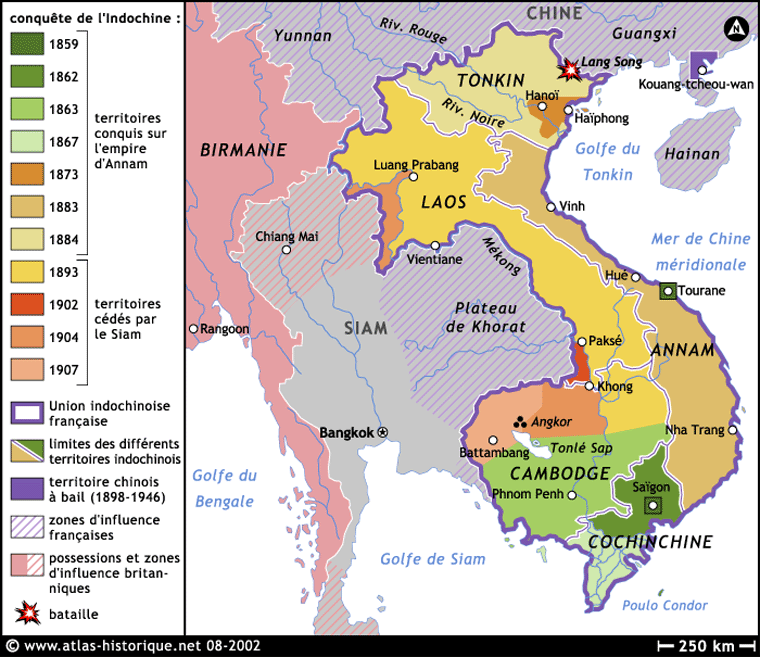
French Indochina under Japanese rule
By the time of the August events of 1945, which will be discussed in this article, Vietnam remained part of French Indochina, which also included the territories of modern Laos and Cambodia. French colonialists appeared here in the middle of the XIX century and, as a result of several Franco-Vietnamese wars, alternately captured the three main regions of Vietnam. The southern part of the country, Cochinchina, became a French colony as far back as 1862, and over the central part, Annam, in 1883-1884. a French protectorate was established, and the northern part, Tonkin, became the protectorate of France in 1884. In 1887, all regions became part of the Indochinese Union — the territory controlled by France. However, with the beginning of World War II, when France capitulated to Hitler’s troops and the power of the puppet Vichy government was established in Paris, French Indochina fell into the sphere of influence of Japan. The Vichy government was forced to allow the presence of Japanese troops led by Major-General Takuma Nishimura on the territory of Indochina. But the Japanese decided not to dwell on the deployment of the garrisons, and soon Vietnamese were invaded by units of Lieutenant-General Akihito Nakamura's 5 Japanese division, who were able to quickly crush the resistance of the French colonial forces. Despite the fact that September 23 1940, the Vichy government officially turned to Japan with a note of protest, the provinces of Vietnam were seized by Japanese troops. Vishista had no choice but to agree with the Japanese occupation of Vietnam. A formal French-Japanese protectorate was formally established over the country, but in fact all the key questions of the political life of Vietnam from that time began to be decided by the Japanese command. Initially, the Japanese acted quite cautiously, trying not to quarrel with the French administration and, at the same time, to enlist the support of the Vietnamese population. Among the Vietnamese in the early 1940's. national liberation sentiments intensified, since the appearance of the Japanese - "Asian brothers" - inspired the supporters of Vietnam’s independence with the hope of getting rid of French power soon. Unlike the French, Japan did not seek to formally turn Vietnam into its colony, but hatched plans to create a puppet state, like the type of Manchuku or Mengjiang in China. To this end, the Japanese provided full support to the right side of the Vietnamese national movement.
It should be noted here that in the Vietnamese national liberation movement in the period between the two world wars, there were two main directions - right and left. The right wing of the national movement was represented by traditionalists who advocated the return of Vietnam to the forms of statehood that existed before the French colonization. The left wing of the Vietnamese national movement was represented by the Communist Party of Indochina (KPIC) - the pro-Soviet communist party founded in Hong Kong in 1930 - based on several 1920s that existed since the mid-1990s. communist organizations.
Since the beginning of World War II, the French authorities of Indochina, with the support of the Japanese, managed to seriously limit the activities of the Communists in Vietnam. As a result of police repression, the Vietnamese communists were forced to move to southern China, while the right wing of the Vietnamese national movement continued to function successfully in Vietnam. Organizations such as the National Socialist Party of the Great Vieta and the Popular Rule Party of the Great Vieta appeared. These organizations were supported by the Japanese occupation administration. At the same time, the religious organizations Kaodai and Hoa Hao, which during the period under review, tried to express their political positions, also became active. The Hoa Hao sect, created shortly before the war by the preacher Huynh Fu Shaw, advocated a return to the original values of Buddhism, but at the same time was anti-French and nationalistic in nature. In addition, Huynh Fu Sho was not a stranger to the slogans of social populism. The French colonial authorities negatively referred to the “Hoa Hao” sermons and placed Huynh Fu Sho in a psychiatric hospital, and then sent him to Laos. On the way to Laos, Huyin Fu Shaw was kidnapped by Japanese intelligence services and was kept under house arrest in Saigon until 1945 - it is obvious that the Japanese hoped to use the preacher in their own interests in a certain situation. Another major religious organization, Kaodai, appeared at the end of the 1920s. At its origins stood the former official Le Van Chung and the prefect of the island of Fukuo Ngo Van Tyuu. The essence of her teaching was close to Buddhism - to achieve a person’s exit from the “wheel of rebirth”, and the kaodists actively used spiritualistic practices. Politically, Kaodai also joined the national movement, but to a greater degree than Joao, sympathized with the Japanese. Both Kaodai and Hoa Hao later created their own armed units, numbering thousands of fighters. Meanwhile, in 1941, the establishment of the Vietnamese Fight League for Independence, Viet Minh, which was based on members of the Communist Party of Indochina headed by Ho Chi Minh, was proclaimed in South China. Unlike the right wing of the Vietnamese national movement, the Communists were set up to fight not only against the French, but also against the Japanese invaders.
Restoration of the Vietnamese Empire
The political situation in Vietnam began to change rapidly with the onset of 1945, when Japanese troops suffered serious defeats in the Philippines and in several other regions. By the spring, the Vichy regime in France had virtually ceased to exist, after which the possibility of the further coexistence of the French and Japanese administrations in Indochina disappeared. 9 March 1945, the Japanese command demanded that the French colonial administration disarm subordinate units of the colonial forces. In Saigon, the Japanese arrested and killed several French senior officers, and later decapitated two officials who refused to sign the surrender of the French administration. However, the combination of French soldiers and officers, primarily soldiers of the Foreign Legion, from 5700, managed under the command of Brigadier General Marcel Alessandri to break from Indochina into southern China, which was under the control of the Kuomintang. Japan, having liquidated the French colonial administration in Indochina, began its well-tried practice of creating puppet states. Under the influence of Japan, the independence of three parts of French Indochina — the Kingdom of Cambodia, the State of Laos, and the Vietnamese Empire — was proclaimed. In Vietnam, with the support of the Japanese, the monarchy of the Nguyen dynasty was restored. This dynasty ruled Viet Nam from 1802, including before 1887, as an independent state, and from 1887, ruled the protectorate Annam. In fact, the imperial dynasty Nguyen ascended to the princely family Nguyen, which in 1558-1777. governed the southern part of Vietnam, but then were overthrown during the Teyshon uprising. Only one branch of the princely family managed to escape, whose representative Nguyen Fook Anh (1762-1820) was able to seize power in Annam and proclaim the creation of the Annam Empire.
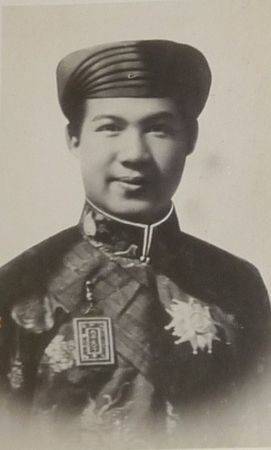 By the time the Second World War began, Bao Dai was considered the formal emperor of Vietnam. He was the thirteenth representative of the imperial family Nguyen and it was he who was destined to become the last monarch of Vietnam. At birth, Bao Dai received the name Nguyen Phuc Vinh Thuy. He was born on October 22 1913 in the city of Hue - the then capital of the country, in the family of the twelfth Emperor Annam Khai Dinh (1885-1925). Since by the time Bao Dai was born, Vietnam had long been under the rule of the French, the heir to the throne was educated in the metropolis - he graduated from the Lyceum Condorcet and the Paris Institute of Political Studies. When Emperor Khai Dinh passed away in 1925, Bao Dai was crowned as the new emperor of Annam. In 1934, he married Nam Fyung. The future empress also bore the Christian name Maria Theresa and was the daughter of a successful Vietnamese Catholic merchant who was educated in France. In fact, before the Japanese invasion of Vietnam, Bao Dai did not play a major role in Vietnamese politics. He remained the puppet head of the Vietnamese state and was more focused on his personal life and solving his financial problems. However, when Japanese troops appeared in Vietnam, the situation changed. The Japanese had a special interest in Bao Dai - they hoped to use it with the same purpose as Pu Yi in China - to proclaim the head of the puppet state and thereby achieve support of the broad masses of the Vietnamese population, for whom the emperor was still a symbol of national identity and the personification of the age-old traditions of Vietnamese statehood. When 9 in March 1945, the Japanese forces carried out a coup d'etat and eliminated the French command in Indochina, the Japanese leadership demanded that Bao Day proclaim Vietnam independence, otherwise threatening to hand over the throne of the emperor to Prince Kyong De.
By the time the Second World War began, Bao Dai was considered the formal emperor of Vietnam. He was the thirteenth representative of the imperial family Nguyen and it was he who was destined to become the last monarch of Vietnam. At birth, Bao Dai received the name Nguyen Phuc Vinh Thuy. He was born on October 22 1913 in the city of Hue - the then capital of the country, in the family of the twelfth Emperor Annam Khai Dinh (1885-1925). Since by the time Bao Dai was born, Vietnam had long been under the rule of the French, the heir to the throne was educated in the metropolis - he graduated from the Lyceum Condorcet and the Paris Institute of Political Studies. When Emperor Khai Dinh passed away in 1925, Bao Dai was crowned as the new emperor of Annam. In 1934, he married Nam Fyung. The future empress also bore the Christian name Maria Theresa and was the daughter of a successful Vietnamese Catholic merchant who was educated in France. In fact, before the Japanese invasion of Vietnam, Bao Dai did not play a major role in Vietnamese politics. He remained the puppet head of the Vietnamese state and was more focused on his personal life and solving his financial problems. However, when Japanese troops appeared in Vietnam, the situation changed. The Japanese had a special interest in Bao Dai - they hoped to use it with the same purpose as Pu Yi in China - to proclaim the head of the puppet state and thereby achieve support of the broad masses of the Vietnamese population, for whom the emperor was still a symbol of national identity and the personification of the age-old traditions of Vietnamese statehood. When 9 in March 1945, the Japanese forces carried out a coup d'etat and eliminated the French command in Indochina, the Japanese leadership demanded that Bao Day proclaim Vietnam independence, otherwise threatening to hand over the throne of the emperor to Prince Kyong De. 11 March 1945 g. Bao Dai announced the denunciation of the Vietnamese-French Treaty of 6 on June 1884 and proclaimed the creation of an independent state of the Vietnamese Empire. Pro-Japanese nationalist Chan Chong Kim became Prime Minister of the Vietnamese Empire. However, the emperor and his government attempted, taking advantage of the defeats of the Japanese troops in the battles with the Americans in the Asia-Pacific region, to push through their interests. Thus, the government of the Vietnamese empire began work on the reunification of the country, which was divided during the French domination of the protectors of Annam and Tonkin and the colony of Cochinhin. After the coup 9 in March, 1945 was under the direct control of the Japanese command, and the emperor insisted on its reunification with the rest of Vietnam. Actually, the very name "Vietnam" was established on the initiative of the imperial government - as a combination of the words "Dayviet" and "Annam" - the names of the northern and southern parts of the country. The Japanese leadership, fearing in a difficult situation to lose the support of the Vietnamese, was forced to make concessions to the imperial government.
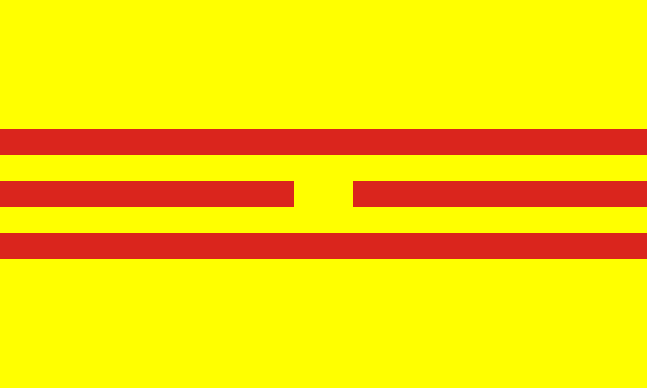
16 June 1945, the emperor Bao Dai signed a decree on the reunification of Vietnam, and on June 29, the Japanese governor-general of Indochina signed decrees on the transfer of part of the administrative functions from the Japanese administration to independent Vietnam, Cambodia and Laos. Japanese and Vietnamese officials began work on preparations for the reunification of Cochin China with the rest of Vietnam, the latter being credited specifically to the Japanese authorities. It was emphasized that without the help of Japan, Viet Nam would have remained a French colony and not only would not be reunited, but would not have attained the long-awaited political independence. 13 July was decided to transfer Hanoi, Haiphong and Da Nang under control of the Vietnamese empire from 20 July 1945, and the Vietnamese reunification ceremony was scheduled for 8 August 1945. Saigon was designated as the venue. In the meantime, the international military-political situation was far from being the best for Japan. Already in the summer of 1945, it became clear that Japan would not be able to win the war against the Allies. This was well understood by political circles in the countries of Southeast Asia, who were in a hurry to reorient themselves to the allies, fearing a possible arrest for collaborationism after the withdrawal of Japanese troops. 26 July 1945 at the Potsdam Conference, Japan was demanding unconditional surrender. In Vietnam, among the political elite close to the emperor Bao Dai, panic began. The government resigned, and the new government was never formed. After the Soviet Union entered the war with Japan, the final of the events became finally predictable. The position of the imperial regime was aggravated by the intensification of the struggle of the Vietmini, led by the Vietnamese communists.
Communist Party and Viet Minh
The anti-Japanese and anti-colonial guerrilla movement in Vietnam was led by the Communist Party of Indochina. Like many other communist parties in the countries of East, South and Southeast Asia, it was created under the influence of the October 1917 revolution in Russia and a deepening interest in socialist and communist ideas among the advanced circles of Asian countries. The first Vietnamese communist group appeared at the beginning of 1925 among Vietnamese immigrants in Guangzhou and was called the "Vietnam Youth Revolutionary Fellowship". It was created and led by Comintern Representative Ho Chi Minh (1890-1969), who came from Moscow to Guangzhou, a Vietnamese revolutionary who emigrated from the country in 1911 and lived for a long time in France and the United States.
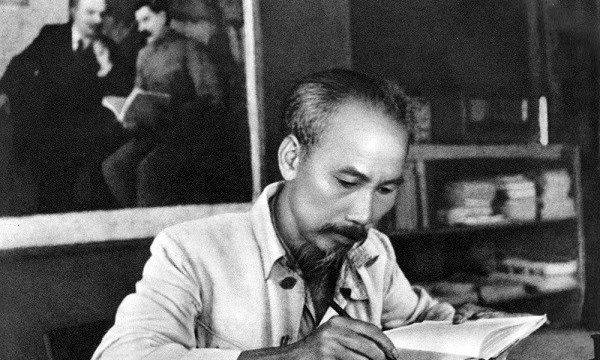
Back in the city 1919 Ho Chi Minh wrote a letter to the heads of state who concluded the Versailles Treaty, asking for independence for the countries of Indochina. In 1920 was Ho Chi Minh joined the French Communist Party and from that time did not change the communist idea. The partnership created by Ho Chi Minh set national independence and the redistribution of land to the peasants as its goal. Realizing that the French colonialists would not simply give up power over Vietnam, the members of the Partnership advocated the preparation of an armed anti-French uprising. In 1926 was The partnership has begun to create offices in Vietnam and 1929. there were more than 1000 activists in Tonquin, Annama and Cochinquin. 7th of June 1929 a congress was held in Hanoi, in which more than 20 people participated, representing the Tonkin branches of the Revolutionary Youth Partnership. At this congress, the Indochinese Communist Party was created. Autumn 1929 the rest of the activists of the Partnership created the Annam Communist Party. In the end, the 1929 another revolutionary organization was created - the Indo-Chinese Communist League. 3 February 1930 city in Hong Kong, the Annam Communist Party, the Indo-Chinese Communist Party and a group of activists of the Indochinese Communist League united in the Communist Party of Indochina. The French Communists, who actually took charge of the “younger brothers” - like-minded people from the Indo-Chinese colonies, rendered assistance in creating the Communist Party. In April, the 1931 The Communist Party of Indochina was admitted to the Communist International. The activities of this political organization took place in the semi-underground, because the French authorities, who could still tolerate the communists in France, were very much afraid of the spread of pro-Soviet and communist sentiments in the colonies and protectorates. After the start of the Second World War, the Communist Party decided to prepare for warfare, since legal and semi-legal methods of activity in the conditions of hostilities became ineffective. In 1940 was a rebellion broke out in Cochinchina, after the suppression of which the French colonial authorities turned to hard repression against the communists. A number of leading communist leaders were arrested and executed, including Nguyen Van Ky, secretary general of the Communist Party of Indochina (1912-1941) and the former secretary general of the Communist Party Ha Huy Thapa (1906-1941). In total, at least 2 thousands of Vietnamese became victims of repression against the communists during the Second World War. Ho Chi Minh, who left for China, was arrested by the Kuomintang police and spent over a year in a Chinese prison. Nevertheless, despite the arrests and repressions, the Vietnamese Independence League (“Viet Minh”), created at the initiative of the communists, was able to launch armed resistance to the French and Japanese troops in the country. The first Vietminh guerrilla units were established in the province of Kaubang and the county of Bukson in the province of Langsang. The northern part of Vietnam - “Vietbak” - the Chinese border area, covered with mountains and forests - became an excellent base for the emerging partisan detachments. The Communists were engaged in political education of the peasant population, the spread of propaganda and propaganda literature. To extend the struggle to the flat part of Vietnam, in 1942 An Avant-garde squad was formed to march on the South.
In Nguyen Zyap (1911-2013), a member of the communist movement from 1927, he received a law degree at Hanoi University, then lived in China for a long time, where he received military and revolutionary training. In fact, he was the main military leader of the Vietnamese communists by the beginning of the Second World War. Under the leadership of Vo Nguyen Ziapa, the formation of Vietnamese partisan detachments took place.
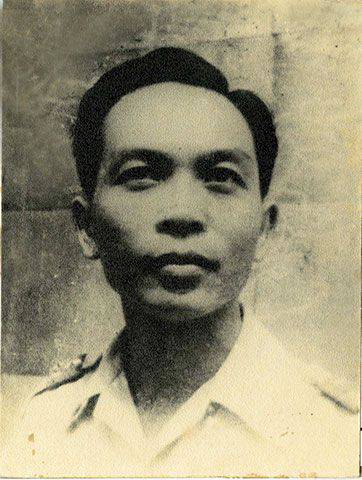 By 1944, the Communists took control of the provinces of Caobang, Langsang, Bakkan, Thaynguen, Tuyenkuang, Bakzyang and Vinyen in North Vietnam. In Vietnamese-controlled territories, government bodies were created, the functions of which were carried out by the territorial committees of the Communist Party of Indochina. 22 December The first armed detachment of the future Vietnamese army was formed in Caobang Province in the province of Caobang, which consisted of a 1044 man armed with a 34 machine gun, 1 rifles, 17 pistols and 2 flint rifles. The commander of the detachment became Wo Nguyen Ziap. In April, 14, the number of Viet Minh’s armed units reached 1945 thousand fighters, and on May 1, 15 was proclaimed the creation of the Vietnamese Liberation Army. By the spring of 1945, the Vietminh controlled part of North Vietnam, while the Japanese troops were only in the strategically important cities of the country. As for the French colonial troops, many of their soldiers went to contact with the Communists. 1945 June 4 was established the first liberated region with the center in Tanchao. The number of Vietminh combat units by this time was at least 1945 thousand fighters. However, in the south of the country, the Viet Minh had practically no political influence — their own political organizations operated there, and the socio-economic situation was significantly better than in North Vietnam.
By 1944, the Communists took control of the provinces of Caobang, Langsang, Bakkan, Thaynguen, Tuyenkuang, Bakzyang and Vinyen in North Vietnam. In Vietnamese-controlled territories, government bodies were created, the functions of which were carried out by the territorial committees of the Communist Party of Indochina. 22 December The first armed detachment of the future Vietnamese army was formed in Caobang Province in the province of Caobang, which consisted of a 1044 man armed with a 34 machine gun, 1 rifles, 17 pistols and 2 flint rifles. The commander of the detachment became Wo Nguyen Ziap. In April, 14, the number of Viet Minh’s armed units reached 1945 thousand fighters, and on May 1, 15 was proclaimed the creation of the Vietnamese Liberation Army. By the spring of 1945, the Vietminh controlled part of North Vietnam, while the Japanese troops were only in the strategically important cities of the country. As for the French colonial troops, many of their soldiers went to contact with the Communists. 1945 June 4 was established the first liberated region with the center in Tanchao. The number of Vietminh combat units by this time was at least 1945 thousand fighters. However, in the south of the country, the Viet Minh had practically no political influence — their own political organizations operated there, and the socio-economic situation was significantly better than in North Vietnam. Revolution was the beginning of independence
13-15 August 1945 in Tanchao, the center of the liberated region, hosted the conference of the Indochina Communist Party, at which it was decided to launch an armed uprising against the puppet imperial regime before Anglo-American troops landed on the territory of Vietnam. On the night of 13 on 14, the National Committee of the Uprising was set up on August, and Vo was appointed chairman. Nguyen Ziap. The first order of Vo Nguyen Ziapa was the order to start an armed uprising. On August 16, the National Congress of the Viet Minh was held in Tanchao, in which at least 60 delegates from various party organizations, national minorities of the country and other political parties participated. At the congress, it was decided to begin the seizure of power and proclaim the sovereign Democratic Republic of Vietnam. During the congress meeting, the National Committee for the Liberation of Vietnam was elected, which was to perform the functions of the interim government of the country. Ho Chi Minh was elected chairman of the National Liberation Committee of Vietnam. Meanwhile, 15 August 1945, the emperor of Japan turned on the radio to his subjects, announcing the surrender of Japan. This news caused a real panic among the political elite of the Vietnamese empire, who hoped to be in power under the patronage of the Japanese. Some high-ranking Vietnamese officers and officials supported the Viet Minh, the other was focused on armed resistance to the Communists. 17 August 1945 The Vietminh armed detachments from Tanchao entered Hanoi, disarmed the palace guards and took control of the main strategic facilities of the capital. On the same day, a mass demonstration took place in Hanoi, and on August 19, a many thousands rally was held on the Theater Square in Hanoi, at which Viet Minh leaders spoke. By this time, Hanoi was already completely under the control of the Viet Minh.
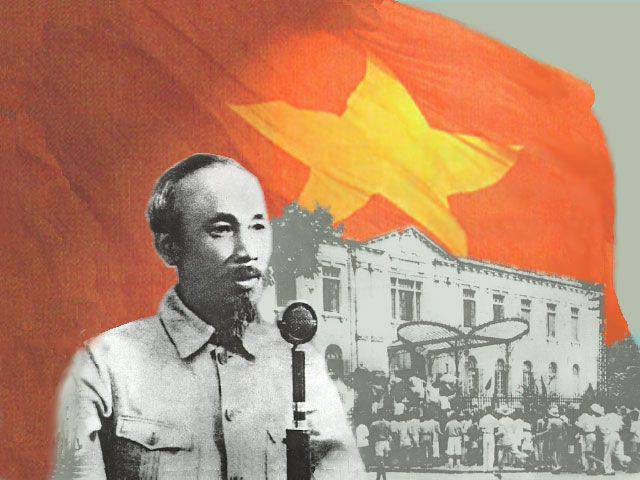
August 19 Day from this time is considered the Victory Day of the August Revolution in Vietnam. The next day, 20 August 1945, the People’s Revolutionary Committee of North Vietnam was formed. The emperor of Vietnam Bao Dai, left without the support of the Japanese, 25 August 1945 abdicated the throne. 30 August 1945, at the rally in Hanoi, the last emperor of Vietnam, Bao Dai, officially read the act of renunciation. Thus, the Vietnamese empire, the state of the Nguyen dynasty, ended its existence. 2 September 1945 was officially announced the creation of the sovereign Democratic Republic of Vietnam. As for the emperor Bao Dai, he was at first officially considered the supreme adviser of the republican government after the abdication of the throne, but after the civil war between the Communists and their opponents broke out in Vietnam, Bao Dai left the country. He emigrated to France, but in 1949, under the pressure of the French who created the State of Vietnam in the southern part of the country, he returned and became the head of the State of Vietnam. However, the return of Bao Dai was short and soon he went back to France. In 1954, Bao Dai was reappointed as head of the State of Vietnam, but this time he did not return to the country, and in 1955, South Vietnam was officially proclaimed a republic. Bao Dai passed away in Paris in 1997, at the age of 83. Interestingly, in 1972, the city of Bao Dai sharply criticized US policy and South Vietnamese authorities.
First Indochinese - France’s response to Vietnam’s independence
The proclamation of independence of Vietnam was not part of the plans of the French leadership, who did not want to lose the largest colony in Indochina, and even in a situation where half of the territory of Vietnam was controlled by the Communists. September 13. 1945 of the British 20 division landed in Saigon. Its command accepted the surrender of the Japanese command in Indochina. The British were released from Japanese prison officials of the French administration. British troops took under guard the most important objects in Saigon, and in 20 September they transferred them under the control of the French administration. 22 September 1945 French units attacked the Viet Minh units in Saigon. 6 March 1946 France recognized the independence of the Democratic Republic of Vietnam as part of the Indochinese Federation and the French Union. After the British troops left the territory of Indochina at the end of March 1946, the leading role in the region returned to France. French troops began to conduct all sorts of provocations against the Viet Minh. So, on November 20, 1946, the French fired at the Vietnamese boat in the port of Haiphong, and the next day, November, 21, demanded that the DRV leadership release the port of Haiphong. The refusal of the Vietnamese leaders to comply with the French requirements led to the shelling of Haiphong by the ships of the French Navy. Six thousand civilians in Haiphong became victims of shelling (according to another estimate, at least 2000, which does not soften the burden of the crime). Note that for the commission of this scandalous war crime "democratic" France has not yet incurred any responsibility and the French leaders of that time have not caught up with their own "Nuremberg."
For France, the criminal actions of France meant the need to move to prepare for long-term hostilities. The First Indochinese war began, which lasted almost eight years and ended with a partial victory for the Democratic Vietnam. In this war, the Democratic Republic of Vietnam was confronted by France - one of the largest colonial empires and the most economically developed countries of the world. The French government, which did not want to weaken its position in Indochina, threw a huge army against Democratic Vietnam. Up to 190, thousands of soldiers of the French army and the Foreign Legion, including units arriving from the metropolis and from the African colonies of France, took part in the hostilities. On the side of France also fought 150-thousand army of the State of Vietnam - a puppet formation, created on the initiative and under the control of the French. Also, the armed forces of the Kaodai and Hoahao religious movements also played into the hands of the French, as well as the troops of Chin Min Tha, a former officer of the Kaodai troops, in 1951 at the head of the 2000 soldiers and officers who disconnected from Kaodai and created their own army opposing Vietminh. Since the French army was much better armed than the Viet Minh forces, and France had almost absolute superiority in the naval and air forces, in the first stage of the hostilities the situation was clearly in favor of the French. By March, 1947, the French troops managed to virtually clear all major cities and strategically important areas from the DRV troops, pushing the Communists to the territory of the Vietbak mountain region, from where the anti-colonial and anti-Japanese partisan resistance of the Vietminh actually began. In 1949, the establishment of the State of Vietnam was proclaimed, and even Emperor Bao Dai was returned to the country, although without the establishment of a monarch.
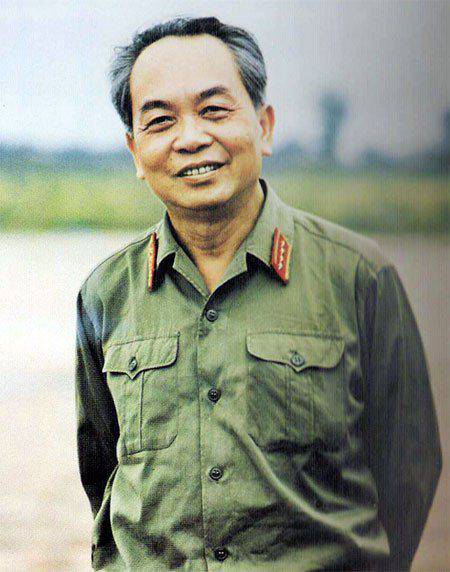 However, in the meantime, Viet Minh received the full support of the young People's Republic of China. Even with 1946, Khmer partisans from the Khmer Issarak movement were on the side of the Viet Minh, with whom the Viet Minh concluded a union agreement. A little later, Viemina had another ally, the La Pate Lao patriotic front. In 1949, the Vietnamese People’s Army was created, which included regular infantry units. The commander-in-chief of the VNA remained in Vo Nguyen Zyap (on the photo). At the end of 1949, the Vietminh forces numbered 40 thousands of fighters organized into two army divisions. In January, 1950 was the government of North Vietnam recognized by the Soviet Union and China as the sole legitimate government of independent Vietnam. The reciprocal step on the part of the United States and a number of other Western states was the recognition of the independence of the State of Vietnam, headed at that time by the former emperor Bao Dai. In the fall of 1949, the Vietnamese People’s Army for the first time launched an offensive against the French. Since that time, a turning point in the war. The courage of the Vietnamese fighters allowed the Viet Minh to significantly press the French. By September, 1950 was destroyed several garrisons of the French army in the area of the Vietnamese-Chinese border, and the total losses of the French army amounted to about six thousand soldiers. 9 October 1950 was a major battle at Caobang, during which France again suffered a crushing defeat. The losses of the French were 7 000 soldiers and officers killed and wounded, 500 armored vehicles and 125 mortars destroyed.
However, in the meantime, Viet Minh received the full support of the young People's Republic of China. Even with 1946, Khmer partisans from the Khmer Issarak movement were on the side of the Viet Minh, with whom the Viet Minh concluded a union agreement. A little later, Viemina had another ally, the La Pate Lao patriotic front. In 1949, the Vietnamese People’s Army was created, which included regular infantry units. The commander-in-chief of the VNA remained in Vo Nguyen Zyap (on the photo). At the end of 1949, the Vietminh forces numbered 40 thousands of fighters organized into two army divisions. In January, 1950 was the government of North Vietnam recognized by the Soviet Union and China as the sole legitimate government of independent Vietnam. The reciprocal step on the part of the United States and a number of other Western states was the recognition of the independence of the State of Vietnam, headed at that time by the former emperor Bao Dai. In the fall of 1949, the Vietnamese People’s Army for the first time launched an offensive against the French. Since that time, a turning point in the war. The courage of the Vietnamese fighters allowed the Viet Minh to significantly press the French. By September, 1950 was destroyed several garrisons of the French army in the area of the Vietnamese-Chinese border, and the total losses of the French army amounted to about six thousand soldiers. 9 October 1950 was a major battle at Caobang, during which France again suffered a crushing defeat. The losses of the French were 7 000 soldiers and officers killed and wounded, 500 armored vehicles and 125 mortars destroyed. On October 21, 1950, French troops were ousted from the territory of North Vietnam, after which they went on to build fortifications in the Ka River Delta. After the crushing defeats suffered by the troops of Vietnam, the French government had no choice but to recognize the sovereignty of the DRV in the framework of the French Union, which was done on December 22, 1950. However, Vietnam aimed to liberate the entire Vietnamese territory from the French colonialists, so in early 1951 an offensive by the Vietnamese People’s Army was launched under the command of Vo Nguyen Zyap on the position of the French colonial troops. But this time, luck did not smile at the Vietnamese - Vietmin suffered a crushing defeat, losing 20 fighters. In 000, Vietnamese forces launched another series of attacks on French positions - again without success. At the same time, the Vietnamese People’s Army was strengthening, its personnel was growing and armament was improving. In the spring of 1952, units of the Vietnamese people's army invaded the territory of the neighboring Kingdom of Laos, which since 1953 had been in alliance with France against the DRV. During the offensive, the Vietnamese units destroyed the French and Lao garrisons on the border. In the village of Dienbienf, 1949 soldiers and officers of the French army were landed, whose tasks included obstructing the activities of communist bases in Laos. On January 10, 20, France began on the Communist position in Annam, but since the troops of the State of Vietnam played the main role in the offensive, the offensive did not reach its goal. Moreover, cases of desertion from the army of the State of Vietnam became more frequent, since its rank-and-file staff was not eager to shed blood in the war with their compatriots. A major victory for the Communists was the failure of half of the French military transport aviationbased on two airfields - Gia-Lam and Kat-Bi. After this sortie, the supply of French troops to Dienbyenfu deteriorated sharply, since it was carried out precisely from these airfields.
December 1953 - January 1954 characterized by the beginning of the offensive Vietminh troops at Dienbienfu. Four divisions of the Vietnamese People’s Army were redeployed to this locality. The battle continued on the 54 of the day - from March 13 to May 7 1954. The victory was won by the Vietnamese People's Army, forcing French troops totaling 10 863 people to surrender. 2293 French soldiers and officers were killed, 5195 military personnel received injuries of varying severity. In captivity, the French military also had a very high mortality rate - only 30% of the captured French soldiers and officers were captured by the North Vietnamese. 7 in May, Colonel Christian de Castries, who commanded the Dienbienfu garrison, signed an act of surrender, but part of French soldiers and officers led by Colonel Lalande, who was lodging in Isabelle Fort, attempted to break through into French forces on the night of 8. Most of the breakthrough participants died, and only 73 soldiers managed to reach the French positions. Interestingly, Colonel de Castries, who failed to organize the proper defense of Dienbienfu and signed the act of surrender, for the "defense of Dienbienfu" was made a brigadier general. After four months in captivity, he returned to France.
Another crushing defeat of the French troops in Dienbienfu actually ended the First Indochinese war. The French prestige was greatly damaged, and the French public was indignant, outraged by the enormous human losses of the French army and the capture of more than 10 of thousands of French soldiers. In this situation, the Vietnamese delegation headed by Ho Chi Minh, who arrived the day after the French troops surrendered to Diebenfu for the Geneva Conference, succeeded in securing an agreement on a cease-fire and the withdrawal of French troops from Indochina. In accordance with the decision of the Geneva Conference, firstly, hostilities ceased between the DRV and Vietnam, and secondly, the territory of Vietnam was divided into two parts, one of which was under the control of the Viet Minh, the second - under the control of the French Union. In July, 1956 was scheduled to hold elections in both parts of Vietnam with the aim of reunifying the country and creating a government. It was forbidden to supply weapons and ammunition to the territory of Vietnam, Cambodia and Laos by third countries. At the same time, the United States of America did not sign the Geneva Agreements and subsequently took the bloody baton from France, unleashing the Second Indochinese War, which also managed to defeat the forces of North Vietnam.
Celebrating the 19 August anniversary of the August Revolution, the citizens of Vietnam remember that the history of their country's independence is directly linked to those distant events. On the other hand, it is obvious that the entry of the Soviet Union into the war with militarist Japan played an important role in overthrowing the pro-Japanese puppet regime in Vietnam, soon after which the Japanese emperor declared surrender. The Soviet Union played a crucial role in the further assistance to the Vietnamese people during the national liberation struggle against the French colonialists and American aggression.
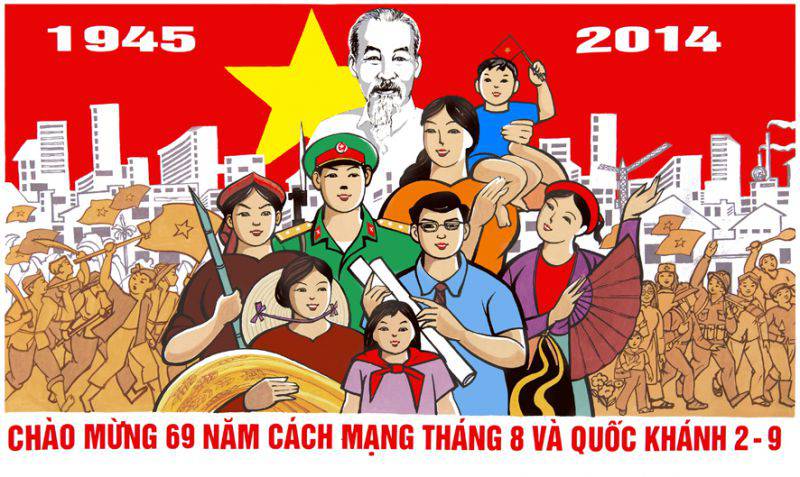
Information